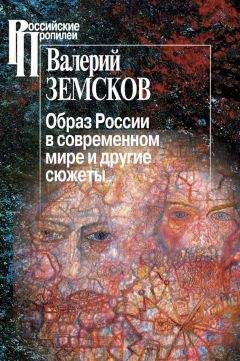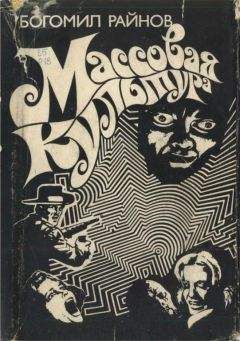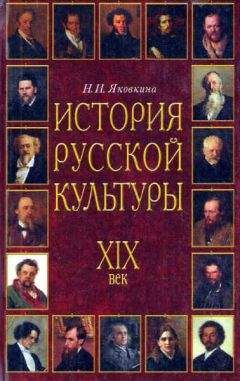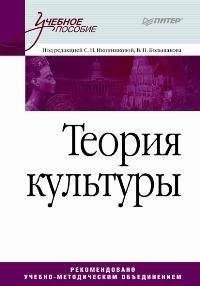Елена Петровская - Безымянные сообщества

Скачивание начинается... Если скачивание не началось автоматически, пожалуйста нажмите на эту ссылку.
Жалоба
Напишите нам, и мы в срочном порядке примем меры.
Описание книги "Безымянные сообщества"
Описание и краткое содержание "Безымянные сообщества" читать бесплатно онлайн.
Книга посвящена практически не исследовавшейся в России проблеме сообщества, понимаемого не как институциональное образование, но как условие прочтения самых разных текстов современной культуры. В сферу рассмотрения включаются такие сюжеты, как художественный авангард начала XX века, утопическое в массовой культуре, событие и документ (в том числе Событие с заглавной буквы), образ в противоположность изображению, «множество» и размышления о политических изгоях. Сообщество, понимаемое как форма коллективной аффективности или как «другое» существующего общества, оставляет след в литературных, кинематографических и фотографических произведениях.
Книга публикуется в авторской редакции.
To sum it up, or to give a new take on the subject, community is that which is devoid of any communitarian «essence». Indeed, no such thing exists. If we think of a «place» for community, it remains «in between» — shapeless, it is rather about the «between», as in the phrase «between us» or «between you and me». An interval which never ceases to create a bond without actually bonding; a touch, provided that it happens at the very limit where singularities (unlike subjects) communicate. However, community is also about questioning communication and communion — and, therefore, about resuscitating the once lost unity, that of non-alienated, «intimate» life. (Here is where Bataille’s problematic predictably comes in: in the blue of noon — a powerful recurring metaphor — the individual remembers: it is some sort of awakening, a déjà-vu, opening onto the lost immanence of being. In this immanence, one might say in this impossible community, men are unaware of the limiting laws of production — they are both «sacred» and «bare».)
In any case, we are invited to think community as having no substance, therefore never reduced to any one of its possible representations, and as resolutely avoiding closure. I would like to pick on these challenging insights in order to suggest a reading of community that will hopefully link it to some of our own basic concerns, given that «we» are historical beings, undergoing a certain moment in our no less historical lives, a moment for which definitions, no matter how tentative, already abound: the post-modern and even the post-postmodern, the post-industrial, the post-historical (another variant of history?), and, on a more modest scale, the post-Soviet itself. I would like to analyze this moment by discussing «anonymous communities», incomplete and indefinable collectives attested to primarily by their fantasy lives.
Needless to say that art has the greatest capacity for revealing the truth of the moment. In my own research I have been particularly indebted to some of the current practices of photography where it reaches the very edge of visibility. No longer simply showing what is to be seen, photography triggers off collective fantasizing — but it does so in a necessary way. For our access to history, indeed our experience of history, is mediated through these fantasies, which seem to condense and materialize, in an almost impossible way, the very conditions of seeing. Photography, therefore, simultaneously renders the visible and the conditions of visibility, and in this it is undoubtedly historical.
What are these imagining collectives? And whence the necessity of such imagination? Here, finally, we must return to anonymity. Instances of anonymity are many. The most striking one, perhaps, is what has been pejoratively called the banal by being implicitly set against the individual and the uncommon. However, the banal seems to map out a new space of commonality which does not reduce to the artifacts of the banal and to their use in common. What banality points to is a new form of subjectivity emerging in «post-societies», call them whatever you will, or, to be more accurate, a new form of partaking — that of stereotypes. In terms of photography and its theorizing it would most certainly mean this: «my» photograph as the epitome of individual affect, the site of an unwritten personal story (to remember Barthes’ astonishing project), gives way to «whatever» photograph, dealing with an affectivity which is a priori shared. And the «bleak», interchangeable surface of «whatever» photograph is precisely the space of anonymous freedom.
There is no use showing pictures, or at least almost none. What I am talking about has little to do with the material certitude of an image. It has to do with the image coming into visibility when it is recognized by a fantasizing collective. And such recognition is twofold. On the one hand, the image crystallizes into a meaningful whole, i.e., emerges precisely as image, whereas on the other, it gives rise to a fleeting collective that recognizes itself in the image. Neither viewer as such nor the fantasizing collective exist prior to these dreams. We might say that fantasies return or, better still, are restored to the dreaming collective, for what is recognized is exactly this mode of being-in-common. There is no other «content» to dreams except for affective partaking.
But let us not be entirely hostile to material surfaces. Surfaces, objects, artworks are the sites where fantasies, however temporarily, reside. The latter are just so many displacements of representation, of the represented. But, as I have tried to indicate, fantasizing is connected to a certain moment when the understanding of the passing time undergoes dramatic changes. Discontinuous and out of joint, time today is either reified by being sliced into decades, which, as a way of grasping one’s own immediate past and present, is itself a form of historical consciousness (here I am referring to Fredric Jameson’s seminal interpretation), or, time is, so to say, enhanced, rendered whole in one’s imagination. Reified time is the presentation of a space or unit, whereas time whose wholeness is achieved through the workings of imagination is an attempt to come to terms with nothing other than experience. Fantasies are the simple indication that experience took place. However, by the same token, they are never arbitrary.
What is at stake is indeed experience, anonymity as shared experience. Examples of negative anonymity are too painful and shocking to be cited in passing. Yet, everyone is well aware of this anonymity-towards-death, which remains to be tackled theoretically. Anonymity-towards-death, I will remind, is a polemical figure that Giorgio Agamben addresses to Heidegger, who, with his philosophy of being-towards-death, implicitly asserts the value as well as the dignity of the individual faced with this existential «decision». The reality of concentration camps, however, points out a different mode of existence, in actual fact of survival, — one in which the symbolic value of death itself is brutally denied. Negative anonymity, therefore, has to do with the utter loss of «humanity» or what undeniably appears as such. However, in those wholly indistinguishable faces, in those violently wasted lives there is something that remains — indeed a «remnant», to use Agamben’s term. It is a blank in life and in death, in memory as well as in language. Yet, being constitutive of post-war subjectivity, the remnant is precisely what guarantees our humanity. Agamben refers to the structure of shame, but I will stick to experience.
Experience is something that remains essentially un(re) presentable, given that we are not talking about the experience which is accumulated and stored. Experiential knowledge, positive knowledge, the continuous flow of human memory enriched by experience — we are referring to no such thing. Obviously, there are less traumatic examples of experience and likewise of anonymity than the one I cited a moment ago. But what appears indisputable for all the cases in question is that experience calls for translation. Otherwise it runs the risk of perpetrating a nightmare, coupled and eventually replaced with just another form of ressentiment. Or this experience will simply fall into oblivion together with the collectivity to which it occurred. Collective experience, or the experience of a collective, demands articulation. To link this to my preceding argument, it has to be recognized.
So let us once again return to anonymity. Anonymity has always been treated as that homogeneous backdrop against which individuation takes place. Moreover, forms, subjects and values would come into being by virtue of surpassing this inertness, by way of leaving it behind. Therefore, it would be something like a springboard for future social incarnations and, on a different level, would serve as a metaphor for the unpleasantly amorphous. (Think of the «anonymous reader» — there is nothing more disconcerting, even now, than the socalled anonymous reader, someone no true writer or academic, for that matter, really wants to address. Art in general, to be sure, has been a form of individuation par excellence, a way of positing values, and this has been done against (both in contradistinction and in opposition to) something that remains stubbornly indifferent or inert — shall we say anonymous?) But let us think of anonymity as standing outside the binary division: if we still choose to call it background, then there will be no figure to set it in contrast against. Or, rather, every figuration would appear as a fold of the anonymous, while anonymity would be reminiscent of a primary element engendering the world itself.
Synonymous with experience, anonymity belongs neither to presence nor to re-presentation. As such, it cannot be represented. But what is represented, especially today, can point to anonymity as an essentially shared experience. What is the Soviet? (The exploration is facilitated by our addressing the topic retrospectively.) What is the world that has crossed the threshold of globalization? What is the world for which this definition remains empty, providing not even the slightest hint of a descriptive discourse? What is private life in the obvious absence of privacy? These and other related questions spring from an unresolvedness — there is no answer to them, at least no answer from «us», who are undergoing this kind of experience. But while being «in» (or «inside») experience, we do form transient communities, irrespective of our actual social identifications. Experience, to be sure, cuts across accepted identifications by suspending and dramatically reworking them all. It opens onto a space of commonality (likewise communality), a space interspersed and laden with affect.
Anonymity, therefore, has nothing indistinct or obscure about it. It is, on the contrary, the moment of greatest clarity that one could possibly expect: on the one hand, it indicates a primary bond apropos experience, a bond already in place, while on the other, it shows that there is no readymade collective which would neutralize and thus forget this experience by way of assimilating it. Anonymity is a flash of the false and living memory of a community that is constantly being reborn.
The spectators of Cindy Sherman’s famous «Untitled Film Stills» dating from the late 1970s insisted on having seen «those movies». Of course, it was impossible to attribute them in any meaningful way, besides a viewer is not an art historian. The tremendous success of these photos lies in the fact that they were recognized by the so-called ordinary people. What Sherman managed to produce was a dreaming collective — a collective dreaming history itself, whose experience is strongly mediated by the movies. «A democracy of glamour» — this is how Laura Mulvey has defined this imaginary construct of the fifties: something being close and even stored in memories and at the same time endlessly remote, for the experience of time is itself from now on imagistic, cinematic. But again, this is not a pictured image. Rather, it is a crudely constructed representation which gives way to collective fantasizing. The image is forgotten in as much as something else attaches itself to its surface — this something, this invisible supplementation is precisely the way in which Sherman’s pictures form a space of commonality. Such commonality, to be sure, is profoundly affective, for the image of that time is itself a shared experience of history.
The cruder the image, the better for our common dreams. A material surface is just the site of so many ruins. However, they are brought to bear on a greater, seamless whole, because each of those details, in its turn, has been touched and magnified by so many aspiring glances. What the viewer «sees», therefore, is nothing other than this aura — a detail that has already been sublated, transfigured, suffused by the dreamworlds of others. (I am referring here to a term carefully examined by Susan Buck-Morss as well as to a phenomenon she has so originally analyzed precisely by putting it into a historical perspective.) In other words, instead of categorizing his or her historical experience, the viewer allows it to «float» in its pre-semantic openness and overabundance.
The same kind of exploration seems to have been carried out by my compatriot Boris Mikhailov. However, Mikhailov not so much plays on the cinematic-historical as he traces lines of continuity for Soviet experience or the experience of the Soviet, to be more accurate. I would take the liberty of summing up his work as follows. Experience never allows for a plenitude of meaning. While it is taking place, it lacks in meaning, it is meaningless, in fact. At best we can hope to focus on what Raymond Williams has so aptly called «structures of feeling», a form of sensibility that is still in the making. Needless to say that structures of feeling are short-lived. They may roughly indicate a decade or a generation. Also, they are quite diffuse. But what they do point out is a collectivity having its emotional, i.e., fantastic, phantasmatic stakes in the passing moment. This is exactly what is lost in the master narratives of history. Barthes, as we remember, was scandalized by the irretrievable loss of the «unknown» individual as well as of his or her emotion. His great book on photography is an affirmation of filial love. But no less can one be scandalized and saddened by the loss of whole collectives, whose only «objective» quality would consist in their shared affective being.
To return to Boris Mikhailov and his lifelong endeavor. What he has been trying to do is to translate this blank or omission — the emotional lives of the generations that are closest to us, of our fathers and grandfathers. What do we know about them? What will we store in our memories, especially if historical memory in my country was denied at one point as such? How can we hope to preserve the truth of «their» moment if we know very little about it, almost nothing at all? Again, I am not referring to a knowledge of facts and/or dates. I am talking of the experience of the Soviet with a special emphasis on both of these words. And if I have already briefly spoken of experience, let me now concentrate on the Soviet. The Soviet that Mikhailov is showing us — and here lies the greatest paradox of his photography — is in fact the doubling of representation and its visible signs (which are also signs of the Soviet: ethnographic details, culturally coded landscapes, etc.) with the invisible, an act which allows for this very reading to take place. Only the punctum, to use Barthes’ term, or the implied photographic reference, has to do with an a priori existing collective. What is posited here, in other words, is a spectator who does not stand in some sort of contemplative isolation (such is the paradigm of classical art). On the contrary, in order to «see», you must already be part of a dreaming collective. For these pictures, very much like Sherman’s series, become truly visible through a shared affectivity that keeps resurfacing in them.
Подписывайтесь на наши страницы в социальных сетях.
Будьте в курсе последних книжных новинок, комментируйте, обсуждайте. Мы ждём Вас!
Похожие книги на "Безымянные сообщества"
Книги похожие на "Безымянные сообщества" читать онлайн или скачать бесплатно полные версии.
Мы рекомендуем Вам зарегистрироваться либо войти на сайт под своим именем.
Отзывы о "Елена Петровская - Безымянные сообщества"
Отзывы читателей о книге "Безымянные сообщества", комментарии и мнения людей о произведении.
























